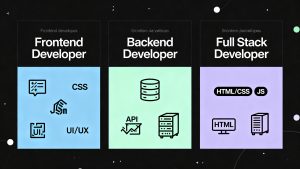Developers have long wrestled with state management in frontend applications. Traditional methods often involved complex setups, with state scattered across components, global stores, backends, and caches. The rise of libraries like Redux, Zustand, and Recoil aimed to simplify this chaos, but many solutions still demanded extensive manual intervention and expert knowledge, especially when synchronizing UI behavior and preventing bugs.
The Role of AI: From Automation to Collaboration
Artificial intelligence is ushering in a new chapter for frontend state management. Instead of relying solely on manual configuration, emerging AI-driven solutions analyze how state flows through projects during development. These tools can automatically detect common patterns, suggest optimized memoization or caching strategies, and identify unnecessary component re-renders, helping developers streamline performance and logic without exhaustive code auditing.
AI as a Developer Partner
Rather than replacing developers, AI acts as a helpful collaborator. For example, intelligent libraries can learn typical data usage, highlight potential race conditions or redundant updates, and proactively recommend changes. Meta and Vercel are among the organizations experimenting with machine learning-assisted tooling, using AI to restructure inefficient component trees and resolve subtle state issues more effectively than traditional approaches.
Declarative Programming Meets Predictive Modeling
AI is set to move frontend development from code-centric to behavior-centric workflows. By defining app behaviors with simple declarations or natural language, developers can guide AI systems to infer, propose, and even implement appropriate state logic. Edge cases, like duplicated items or state desynchronization, become far easier to manage because AI can adapt recommendations to the real-world usage of the application.
Practical Use Cases Shaping 2025
- Predictive Data Prefetching: AI models anticipate user actions and precompute state transitions, resulting in smoother, more responsive interfaces.
- Automated Conflict Resolution: Collaborative apps use AI to spot and resolve conflicting user actions before they appear, improving user experience on document editors and productivity tools.
- State Visualization and Debugging: Tools powered by AI explain data changes in plain language, referencing user actions, API responses, and state graphs for easier debugging and review.
- Intent Modeling: Developers describe intended user flows—such as resetting state on logout—and AI translates those intentions into reliable code logic.
- Simulated Component Behaviors: Before deployment, AI-driven testers simulate countless user flows, revealing performance concerns and hard-to-find functional bugs.
Rethinking Developer Responsibilities
As AI takes over routine orchestration, developers shift focus to defining overall user experience, business logic, and app constraints. This transition fosters more dynamic, adaptive applications—where intent and context guide coding, not inflexible architecture. Current tools remain experimental, but the momentum means state management is becoming less painful and more intuitive, powered by intelligent, feedback-driven systems.
Read more such articles from our Newsletter here.



